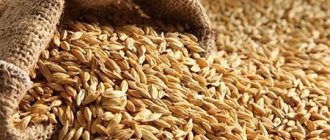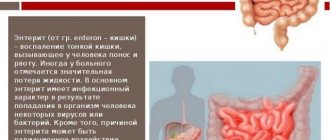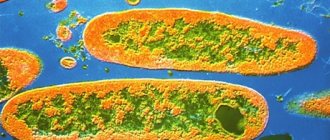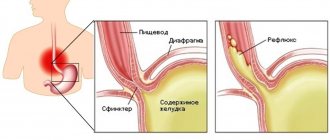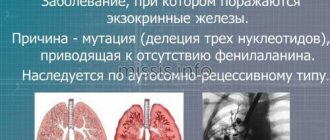The digestive system is one of the most important structures of the body, thanks to which a person receives the necessary nutrients, as well as vitamins and minerals involved in all metabolic processes.
In addition, it is responsible for the absorption and breakdown of nutrients supplied with food. Any disruptions in digestion can lead to disastrous consequences if you do not seek help from a specialist in time. Dolichocolon is a disease characterized by an increase in the length of one or even several sections of the large intestine. At the same time, there is no change in the diameter and thickening of its muscle layer. As a result of this pathological development, the evacuation (excretory) function of the intestine is disrupted, however, its motor function does not change.
Sometimes this pathology can be completely asymptomatic throughout life. In such cases, this is considered a structural feature of the body and a certain variant of the norm. But most often, the elongated sigmoid colon still brings a lot of inconvenience to a person, which manifests itself in the occurrence of unpleasant symptoms that significantly complicate life.
Dolichocolon is observed in approximately 30% of children at birth. Approximately 50% of patients with constipation are diagnosed with this disease as a result of examination.
What causes pathology?
Elongation of sections of the large intestine can be congenital or can develop throughout life.
There are a number of factors that have a negative impact on the fetus during pregnancy and provoke the occurrence of congenital anomalies:
- bad habits of the expectant mother;
- the effect of harmful substances on the mother’s body (for example, preservatives or pesticides);
- suffered a viral or bacterial infection during pregnancy.
In addition, the hereditary factor is of great importance. Thus, the likelihood of a child developing this disease increases significantly if the parents have dolichocolon or any other diseases of the gastrointestinal tract.
Possible reasons for the development of an acquired anomaly include the following factors:
- Sedentary lifestyle. Due to insufficient activity, the patient's blood flow suffers, resulting in stagnation of venous blood, leading to constipation.
- Vegetarianism. Processing plant products takes more time, so, simply put, they rot, which in turn provokes the development of the inflammatory process.
- Metabolic disorders. This factor most often causes dolichocolon in older people.
- Frequent use of enemas. They are necessary in the treatment of certain disorders, however, their abuse increases the likelihood of developing pathology.
The most common cause of lengthening of the large intestine in adults is a violation of intestinal patency, which subsequently leads to the accumulation of feces and impaired excretion. This is primarily due to poor nutrition. The modern human diet contains too little insoluble fiber, which is of great importance for facilitating the excretion of feces.
In addition, insufficient intake of liquid food into the body significantly increases the likelihood of the formation of food lumps that fill the intestinal lumen.
Violation of peristalsis is often caused by the constant stress that a person experiences in modern society. This mechanism is explained by the fact that any pathological changes in the nervous system leave their mark on the functioning of its departments responsible for nutrition and the functioning of the gastrointestinal tract.
Prognosis and prevention
The compensated form of dolichosigma has a favorable prognosis. If an appropriate diet is followed, normal gastrointestinal function is maintained and patients have no complaints. More serious forms of pathology require special therapy; decompensated dolichosigma with complications is an indication for surgery.
There is no specific prevention of this pathology. Given the congenital nature of dolichosigma, pregnant women should adhere to a healthy lifestyle, avoid infections, and give up bad habits. If you have regular constipation, a comprehensive examination is necessary. With adequate therapy, it is possible to avoid complications and restore the functioning of the digestive tract.
Types of dolichocolon
Depending on the section of the large intestine that is involved in the pathological process, the following forms of pathology are distinguished:
- dolichosigma - elongation of the sigmoid region;
- right-sided dolichocolon - elongation of the ascending colon;
- dolichotransversum - elongation of the transverse colon;
- left-sided dolichocolon – elongation of the descending colon;
- subtotal dolichocolon – damage to several parts of the large intestine;
- total dolichocolon is a pathological change in the entire colon.
The essence of the disease
Dolichosigma is the abnormal structure of the sigmoid part. This is the last section of the intestine that ends in the large intestine. An anomaly is defined as an elongation or increase in the diameter of the intestinal lumen. In a normal adult, the length of this section is approximately 24 to 46 cm. With dolichosigma, there are 2 or 3 additional loops. They can twist, fold in layers, and bend. By doing this, they interfere with the full passage of feces and intestinal gases.
According to medical statistics, every fourth person has such deviations in the structure of the intestines. Although the indicators should be higher, the difficulty of detecting the disease does not make it possible to accurately determine the disease in all cases. In children, the disease is registered in 40% of cases with problems with constipation.
Symptoms of dolichosigma
- Constipation is the most common symptom of dolichosigma. We can talk about it if there is no bowel movement for more than three days. Most often, chronic constipation due to this pathology develops in males. It is characterized by a more severe course, the occurrence of many complications, as well as a predisposition to decompensation of the process. As a rule, it is frequent constipation that forces patients to consult doctors and undergo examination, as a result of which the presence of dolichosigma is revealed.
- Bloating or flatulence. This symptom is explained by the formation of additional intestinal loops, which make it difficult for the passage and elimination of gases. Dysbacteriosis is a mandatory disorder that accompanies chronic constipation in people with this disease. Changes in the natural intestinal microflora negatively affect its motor function. This, among other things, is associated with the accumulation of gases.
- Pain (abdominal) syndrome. Dolichosigma is characterized by a decrease or complete disappearance of pain after defecation. Often bowel movements in children occur due to so-called encopresis (stool incontinence).
- Asthenovegetative syndrome. In this case, the patient experiences headaches, increased fatigue, muscle weakness, sleep disturbances, and even trembling of the arms and legs. These signs are explained by the processes of colon intoxication. Due to weakened libido in adult patients, sexual function may be impaired. In addition, quite pronounced dyspeptic disorders develop. This is manifested by a decrease or complete absence of appetite, nausea, which often turns into vomiting and mainly occurs in the morning, after waking up.
Additional nonspecific symptoms that may also occur with elongation of the sigmoid colon include the following:
- pale skin;
- increased fatigue, depressed state;
- increased gas formation;
- rumbling in the stomach;
- feeling of fullness in the intestines;
- white coating on the tongue;
- putrid odor from the mouth;
- dry feces;
- brittle nails;
- hair loss.
Companions of the disease
The disorder, which usually begins in childhood, gradually leads to changes in the functioning of other organs. Failures in the digestive system and other problems begin. When the movement of feces is delayed and intestinal gases accumulate, dysbacteriosis and other abnormalities in digestion begin. Common accompaniments of the disease are gastritis, gastroduodenitis, and other digestive problems.
Constant pain, frequent bloating, increased gas production keeps a person tense and reduces the overall tone of the body. All this quickly leads to the development of stress. This condition is a predisposing factor in the development of gastritis.
Immunodeficiency occurs due to the inability of the intestines to function normally. Gradually, all sorts of infections begin to appear, and the body cannot cope with them. Symptoms of intestinal problems are manifested by specific rashes on the skin.
In children, pancreatitis, colitis, biliary dyskinesia, and disturbances in the functioning of other parts of the digestive system are additionally detected. In adults, varicose veins and hemorrhoids are associated with the disease.
Classification of dolichosigma
Depending on the size of the sigmoid colon and its position in the abdominal cavity, there are S-shaped, single-loop, double-loop and multi-loop. As a rule, dolichosigma is considered to be an elongated two-loop or multi-loop sigmoid colon, which has pathological mobility, moves freely and retains its additional loops after complete bowel movement.
There are three forms of the disease, which can also be considered as successive stages:
- The compensation stage is clinically manifested by abdominal pain and periodic constipation lasting up to three days. Achieving bowel movement occurs through following a special diet, as well as taking mild laxatives. At the same time, general health remains normal.
- The subcompensation stage is characterized by constant constipation, abdominal pain and flatulence. The use of laxatives to regulate stool is ineffective, which in turn forces one to resort to frequent cleansing enemas.
- The decompensation stage is the most severe form of dolichosigma. In this case, constipation lasts more than seven days, and abdominal pain constantly bothers you. The large intestine is swollen and enlarged due to the large accumulation of feces and gases. At this stage, symptoms of intoxication are expressed: loss of appetite, nausea, pustular rashes are noted on the skin. Signs of intestinal obstruction may also occur. For the purpose of complete bowel emptying, only siphon enemas are effective.
With dolichosigma, the child becomes lethargic, capricious, constantly cries and refuses to eat. The main symptom is constipation, which gradually becomes more frequent. If a child experiences the first symptoms indicating the presence of an illness, it is necessary to immediately consult a doctor.
When is surgery indicated?
In the absence of results from conservative treatment of the intestine, in the stage of decompensation, when atony and obstruction occur, the only treatment option is surgery. During surgery the following is performed:
- resection (excision) of part of the long sigmoid colon;
- removal of necrotic walls due to torsion and compression;
- Less commonly, the entire sigmoid colon has to be removed.
The ends of the intestinal loops are sewn together using one of the most suitable methods
Typically, an uncomplicated operation lasts 1.5 hours; general anesthesia is required. In the postoperative period, on the third day you are allowed to get up and walk a little. Antibacterial therapy and detoxification are required, and bleeding is prevented. After 10 days, the patient is discharged.
The patient must follow a diet until peristalsis is completely restored and further limit foods that are not recommended for the intestines. A disease such as dolichosigma is not difficult to diagnose. But further treatment is more difficult the more advanced the intestinal pathology. Therefore, doctors do not recommend enduring constipation. It is necessary to establish the cause and obtain optimal recommendations.
Diagnostics
The main task of the doctor when treating a patient with the complaints described above is to establish the fact that it is dolichosigma that has arisen, and not any other diseases of the digestive system. The following diagnostic methods are carried out.
External inspection and survey
During the initial examination, the doctor may note a general lethargy, pale skin, low weight, and developmental delays. When palpating (feeling) the abdomen, the pain of the right parts of the colon draws attention, the doctor determines the intestinal loops filled with feces, swollen. The rectal examination method indicates an empty rectum, thereby indicating that even with an excess amount of feces, the body is not ready for emptying.
Laboratory research methods
These include a general analysis of blood, urine and feces (coprogram). A high level of white blood cells in the blood (leukocytosis) and an increased erythrocyte sedimentation rate (ESR) are a direct sign of an inflammatory process in the body. A low level of hemoglobin indicates a lack of healthy, fortified nutrition and gives reason to suspect the presence of hidden bleeding, which is not a clinical sign of dolichosigma. The presence of undigested fiber, starch and fat in stool is determined. The admixture of fresh scarlet blood in the stool is due to damage to the mucous membrane when fecal lumps move through the intestines.
Ultrasonography
(ultrasound) of the abdominal organs . This method of instrumental examination is the most common because it is characterized by safety and technical simplicity.
Irrigography
Particular attention is paid to the size of the sigmoid colon, its length, uniformity of diameter, additional loops and expansion zones. In order for the x-ray to show maximum useful information, the intestines should be pre-prepared by performing cleansing enemas.
CT scan
It is carried out if it is not possible to carry out irrigography or to obtain more accurate information. This method allows you to specify the parameters of the large intestine and its affected area.
The doctor's prescription of such an extensive list of studies is due to the need for differential diagnosis. The clinical manifestations of dolichosigma coincide with the signs of cholecystitis, appendicitis, and nonspecific ulcerative colitis.
In order to exclude other pathologies of the gastrointestinal tract, the child should be examined by a pediatric gastroenterologist, coloproctologist and surgeon.
Causes
Dolichocolon is a congenital malformation of the digestive organs and is often combined with other developmental anomalies. The exact causes of the pathology are not known.
Risk factors:
- heredity;
- the age of the parents at the time of conception of the child is more than 35 years;
- adverse effects on the fetus during pregnancy: infections, medications, alcohol, x-rays, household and work factors;
- deterioration of uteroplacental blood flow during pregnancy;
- chronic endocrine diseases: diabetes mellitus, pathology of the adrenal glands and gonads.
According to some scientists, dolichocolon can also be acquired. It is believed to be associated with frequent enemas, abuse of laxatives, and age-related changes in the intestinal wall. But these works do not have an evidence base.
How is the treatment carried out?
Treatment of dolichosigma is required for frequent constipation, if the patient is bothered by chronic colitis or constantly shows signs of intoxication. In any case, diet correction is required. And depending on the severity and form of the pathology, conservative methods of therapy or surgery are used.
Conservative treatment
In children and adults, treatment of this pathology is carried out according to a similar scheme. For this purpose, drugs are used to normalize the intestinal microflora (so-called probiotics), vitamin therapy (B vitamins, retinol, tocopherol), laxatives and choleretic agents, and to relieve intoxication, sorbents are prescribed (drugs that remove toxins, bacteria and other harmful substances from the body).
In order to improve the patient’s well-being, auxiliary procedures are used:
- Exercises to help strengthen the anterior abdominal wall. Only a doctor prescribes the required amount of physical activity. The exercises should be continued for at least three months on average.
- Therapeutic massage for this pathology involves influencing the muscular apparatus of the anterior abdominal wall. As a rule, its duration is no more than ten minutes, and it is carried out approximately half an hour after breakfast or an hour and a half after lunch.
- Colon hydrotherapy - this manipulation involves washing the large intestine with purified water (in some cases it is possible to add a decoction of medicinal plants). The purpose of this procedure is to remove gases, eliminate fecal stones and improve motor function.
In addition, the doctor can prescribe various physiotherapeutic methods aimed at normalizing intestinal motility and accelerating the excretion of feces.
Surgery
Surgical intervention for dolichosigma is carried out only in case of strict indications: chronic constipation for several years, frequent formation of coprolites (fecal stones), as well as in case of ineffectiveness of conservative treatment methods.
The operation is performed by total resection (removal) of the sigmoid colon, having previously provided anesthesia. The complexity of this intervention is that one of its final stages is the imposition of an intestinal stoma (in other words, an opening in the anterior abdominal wall through which the end of the intestine is brought out). The patient has to be with her throughout the postoperative period, but there are cases when she remains for life. In the latter case, disability is issued.
It is possible to assess the effectiveness of surgical intervention almost immediately: restoration of intestinal motility occurs already on the fifth or sixth day, bowel movements occur every day, and stool acquires a normal mushy consistency. 97% of patients do not experience any complications from the abdominal organs in the early postoperative period (the first 2 - 3 weeks).
Possible complications
If treatment or surgery is delayed, this disease leads to dangerous consequences. One of the serious complications is perforation, that is, a through hole in the intestinal wall. Everything that is in the intestine at this moment will penetrate into the peritoneum. This leads to infection if timely assistance is not provided.
This is followed by peritonitis, which is very difficult to fight. Pus affects internal organs, some have to be removed to save a person’s life. Subsequently, this introduces certain difficulties into the functioning of the body.
A big problem is fecal stones - compressed feces. They have a sharp unpleasant odor, torment the patient with pain, lead to acute obstruction, being a consequence of untimely treatment of this disease.
Another complication is purulent lesions on the skin. They appear as a result of the action of toxic substances from rotting intestinal stool. Skin ulcers are a breeding ground for any other pathogenic microorganisms that colonize there. A persistent cosmetic defect with an unpleasant aroma appears on the skin.
Diet for dolichosigma
In addition to the main treatment of the disease, diet is an equally important step. The food of such a patient should be easily digestible and divided into small portions of five to six meals a day. The menu should include fresh fruits and green vegetables, bran, cereals, vegetable oils, mineral water, lean meats and the same broths. Any food should be boiled or baked. You should exclude heavy, smoked, fatty foods from your diet and limit the consumption of baked goods and cereals. In addition, you need to drink at least two liters of water a day, this will help soften the stool and not strain the intestines.
With dolichosigma, it is recommended to adhere to some rules for eating: food must be chewed thoroughly, avoid overeating, and be sure to consume fermented milk products (kefir, yogurt). In addition, you should include greens and vegetables in the menu, as they contain magnesium, which has a beneficial effect on peristalsis, as well as vegetable oil and vegetable juices.
Following a diet can reduce the severity of symptoms of the disease already at the stage of its development and significantly facilitate the recovery period (especially after surgical treatment).
The use of the following products is strictly prohibited:
- alcohol;
- carbonated drinks;
- fatty meat;
- instant food products;
- pasta;
- white bread;
- canned fish and meat;
- mayonnaise;
- Sahara;
- confectionery products;
- seasonings with vinegar, horseradish, mustard;
- spicy ketchup;
- semolina;
- kvass
Reviews
Galina, 58 years old, housewife: I have known about my diagnosis for 5 years. Previously, I had to work hard at a construction site. At 89 years old, my mother has severe intestinal atony. We take turns drinking castor oil and kefir. Helps.
Nelya, 45 years old, doctor: Constipation in old people sometimes becomes the main problem, and then the heart hurts and melancholy sets in. Whether there is dolichosigma there or not is unclear, because they do not want to be examined. The listed laxatives are a bit expensive for retirement. They agree to a diet for the intestines and herbal medicine.
Vera, 42 years old, technologist: You just need to not bring yourself to such a state. And adults are responsible for the intestines of children; there is no point in letting them watch advertisements for all sorts of chips. Does anyone actually check it for health risks?
Consequences of dolichosigma
This disease is dangerous due to the development of many complications for people of any age and gender.
One of these consequences for the female body is the development of adhesions. In approximately 7 out of 10 cases, inflammatory lesions of the sigmoid colon are accompanied by the formation of adhesions with the left uterine appendages. This pathological process also affects the tissues of the rectum and bladder. The main factor in the formation of adhesions is the close location of the pelvic organs to the affected intestine.
The second most common complication is the so-called colonoptosis, which is characterized by prolapse of the colon.
Disability for dolichosigma is not provided for, that is, the very fact of the presence of additional loops in the intestines is not a direct basis for exemption from military service or exclusion from work. However, when raising the problem of registering disability, they first of all pay attention to symptoms that significantly worsen the patient’s quality of life. Especially if there is a need for help from other people. The degree of muscle wasting is also of decisive importance in this matter: with the first degree, disability is not issued, but with the second and third, it is issued.
Since the disease is often congenital in nature, in this case there is no effective primary prevention. However, secondary prevention measures should still be observed: a balanced diet with a sufficient amount of dietary fiber and fiber, drinking regimen, physical activity, as well as avoiding suppressing the urge to defecate and setting aside sufficient time to go to the toilet.
Results
Dolichosigma is an unpleasant disease. It is necessary to treat as soon as the first symptoms appear. Traditional methods of therapy show good results. Traditional medicine serves to improve the health of the body; its recipes must be used with the approval of the attending physician.
The prognosis for recovery is favorable. Surgery is not considered a last resort measure. After it, the intestines are restored and begin to work well. After 4 months, the person is allowed to eat all food and do normal activities, that is, recovery occurs.
Nutrition Basics
The diet for dolichosigma should be as close as possible to table No. 3 (according to Pevzner), where the diet is aimed at eliminating constipation and reducing gas formation.
In adults
The diet for dolichosigma in adults implies compliance with the following rules:
- inclusion in food of a sufficient amount of foods containing dietary fiber (fruits and vegetables, cereals);
- exclusion of foods that increase gas formation in the intestines (fried foods, whole milk, legumes);
- reducing the consumption of animal fats - they weaken the motility of the digestive tract; products containing them can be replaced with vegetable oils;
- cooking food preferably by steaming or by boiling, baking;
- exclude dishes that irritate the intestine (its inner layer) - spicy, smoked;
- eating food is recommended in unground form (meat, fish - chopped or in pieces);
- Most fruits and vegetables should be eaten raw;
- It is advisable to bring the number of meals closer to 5-6 rubles. in a day;
- meals must be consumed in small portions;
- compliance with the drinking regime - fluid consumption per day should be within one and a half to two liters.
An important aspect of the diet for dolichosigma is the equal time intervals between meals - they should average 3-4 hours. Each intake of food into the digestive system increases intestinal motility, which helps eliminate constipation.
The diet for dolichosigma in children is basically no different from nutritional recommendations for adults. The child’s diet also includes foods rich in plant fiber, and the consumption of proteins and fats of animal origin is limited. An important part of treatment is the restoration of intestinal microflora (taking probiotics).
For children who are breastfed naturally, all nutritional rules must be followed by the nursing mother. The mother's consumption of recommended foods also has a beneficial effect on the child's intestinal function.
Formula-fed babies need:
- include fermented milk products in the diet (for children under one year old - adapted formulas, for older children - baby yoghurts);
- periodically feed the child pureed fruits and vegetables, give juices with pulp;
- introduce complementary foods in a timely and gradual manner.
A diet for dolichosigma in older children implies:
- eating food by steaming;
- inclusion of vegetable salads in vegetable oil in the diet;
- adequate fruit consumption;
- The basis of the drinking regime should be fortified drinks (berry fruit drinks, dried fruit compotes).
If a child develops excessive gas, food should be served in crushed form. You should also limit the amount of foods containing simple carbohydrates (sweets, pasta, jam, etc.) in your food.
Nutrition for dolichosigma involves the inclusion of foods that stimulate the motility of the digestive system. At the same time, food that promotes fermentation and long-term digestion in the intestines is prohibited.
Allowed
The diet of a patient with dolichosigma should include:
- slightly dried bread (rye, wheat);
- lean varieties of meat and fish (poultry, rabbit, hake, cod);
- eggs (soft-boiled, steamed omelet);
- wheat, buckwheat, rice, pearl barley;
- weak soups with added cereals;
- greens (lettuce, parsley, dill);
- fermented milk products with a low fat content (kefir, sour cream, fermented baked milk, yogurt);
- vegetables and fruits (preferably raw);
- drinks: fruit drinks, compotes, weak tea and coffee, juices.
Porridge can be cooked with milk, crumbly. It is recommended to cook soups in vegetable broth. Meat and fish can be served either as a whole piece or in the form of meatballs or cutlets.
Prohibited
A diet for intestinal dolichosigma involves the exclusion of food:
- white bread, baked goods, baked goods;
- pork, lamb, salmon, tuna, herring;
- salted, smoked fish products;
- hard-boiled eggs, fried;
- semolina, pasta, legumes;
- soups with strong broths;
- whole milk, fatty fermented milk products;
- mushrooms, spicy vegetables (onions, radishes, garlic, etc.);
- confectionery with cream;
- drinks: strong tea and coffee, alcohol, soda, kvass.
Also limited are foods that in some cases can cause gas formation: grapes, fresh and sauerkraut, chocolate.
If the symptoms of the disease worsen due to the consumption of certain foods, they must be removed from the diet.
User comments
(function(w, d, n, s, t) { w = w || []; w.push(function() { Ya.Context.AdvManager.render({ blockId: 'RA-214620-6', renderTo : 'yandex_rtb_R-A-214620-6', async: true }); }); t = d.getElementsByTagName('script'); s = d.createElement('script'); s.type = 'text/javascript '; s.src = '//an.yandex.ru/system/context.js'; s.async = true; t.parentNode.insertBefore(s, t); })(this, this.document, 'yandexContextAsyncCallbacks ');»+»ipt>
(function(w, d, n, s, t) { w = w || []; w.push(function() { Ya.Context.AdvManager.render({ blockId: 'RA-214620-5', renderTo : 'yandex_rtb_R-A-214620-5', async: true }); }); t = d.getElementsByTagName('script'); s = d.createElement('script'); s.type = 'text/javascript '; s.src = '//an.yandex.ru/system/context.js'; s.async = true; t.parentNode.insertBefore(s, t); })(this, this.document, 'yandexContextAsyncCallbacks ');»+»ipt>
“+”ipt>(adsbygoogle = window.adsbygoogle || []).push({});”+”ipt>



